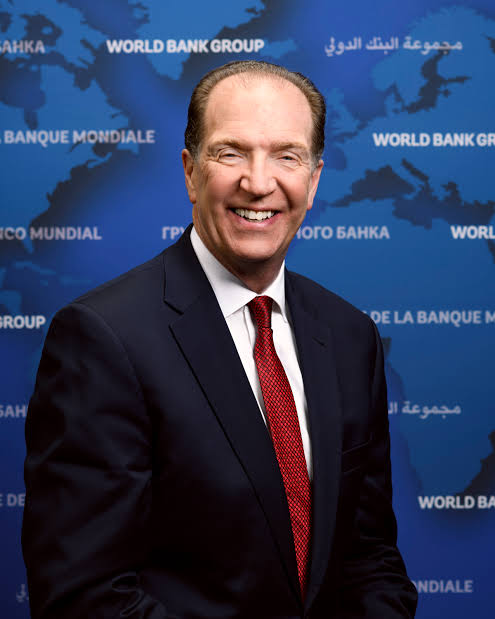Nigeria to experience drop in diaspora remittances this year
The World Bank Group has predicted that inflow of Diaspora remittance to Nigeria will drop by $2 billion in 2020 to $21.7 billion as against the $23.8 billion the country recorded in 2019. The World Bank in a report hinged the decline in remittances from Nigerians living abroad on an account of the double whammy of the COVID-19 pandemic and the attendant economic crisis that has continued to spread.

However, another report from the National Bureau of Statistics (NBS) showed that the federal government generated a total sum of N424.71 billion from Value Added Tax (VAT) in the third quarter of the year (Q3 2020) compared to N327.20 billion in Q2 as well as N275.12 billion in Q3 2019.
Globally, the bank also anticipated that the amount of money migrant workers send home would decline by 14 per cent by 2021, compared to the pre-COVID-19 levels in 2019.
Read also:Why World Bank Suspended ‘Ease of Doing Business’ Rankings
The global lender made this known in its new report ‘Migration and Development Brief 33,’ which was released yesterday. It stated: “Remittances are helping to address the impact on African households. Nigeria remains the largest recipient of remittances in the region and is the seventh largest recipient among LMICs, with projected remittances to decline to around $21.7 billion, a more than $2 billion drop compared with 2019.”
According to the report, remittance flows to low and middle-income countries (LMICs) are also projected to fall by seven per cent to $508 billion in 2020, followed by a further decline of 7.5 per cent, to $470 billion in 2021. It stated that the foremost factors driving the decline in remittances included weak economic growth and employment levels in migrant-hosting countries, weak oil prices; and depreciation of the currencies of remittance-source countries against the US dollar.
Read also:Mobile money key to Africa’s growth, but bad tax policies ruin it – By Bassim Haidar
“The impact of COVID-19 is pervasive when viewed through a migration lens as it affects migrants and their families who rely on remittances,” Vice President for Human Development and Chair of the Migration Steering Group of the World Bank, Mamta Murthi said.
He added: “The World Bank will continue working with partners and countries to keep the remittance lifelines flowing and to help sustain human capital development.”
The report said the anticipated decline in 2020 and 2021 would affect all regions, with the steepest drop expected in Europe and Central Asia (by 16 per cent and eight per cent respectively), and followed by East Asia and the Pacific (11 per cent and four per cent), the Middle East and North Africa (eight per cent and eight per cent), Sub-Saharan Africa (nine per cent and six per cent), South Asia (four per cent and 11 per cent) and Latin America and the Caribbean (0.2 per cent and eight per cent).
Read also:Morocco’s Digitalization Reforms Gets World Bank’s $500 Million Nod
“The importance of remittances as a source of external financing for LMICs is expected to amplify in 2020, even with the expected decline.
Remittance flows to LMICs touched a record high of $548 billion in 2019, larger than foreign direct investment flows ($534 billion) and overseas development assistance (about $166 billion). The gap between remittance flows and FDI is expected to widen further as FDI is expected to decline more sharply.
“Migrants are suffering greater health risks and unemployment during this crisis,” lead author of the brief and Head of Global Knowledge Partnership on Migration and Development (KNOMAD), Dilip Ratha, said.
“The underlying fundamentals driving remittances are weak and this is not the time to take our eyes off the downside risks to the remittance lifelines,” he stated.
The report said: “This year, for the first time in recent history, the stock of international migrants is likely to decline as new migration has slowed and return migration has increased. Return migration has been reported in all parts of the world following the lifting of national lockdowns which left many migrant workers stranded in host countries.
“Rising unemployment in the face of tighter visa restrictions on migrants and refugees is likely to result in a further increase in return migration.
“Despite being the cheapest, money transfer and mobile operators face increasing hurdles as banks close their accounts to reduce the risk of non-compliance with anti-money laundering (AML) and combating terrorism financing (CFT) standards.
Read also:Youth Unemployment Costs Africa $79 Billion Loss Annually
“To keep these channels open, especially for lower-income migrants, AML/CFT rules could be temporarily simplified for small remittances.”
It said strengthening mobile money regulations and identity systems will improve the transparency of transactions, explaining that facilitating digital remittances would require improving access to bank accounts for mobile remittance service providers as well as senders and recipients of remittances.
It added: “Remittances to Sub-Saharan Africa are expected to decline by around nine per cent in 2020 to $44 billion. Within the region, remittances to Kenya have so far stayed positive, though flows are likely to eventually decline in 2021. All major remittance-receiving countries will likely see a decline of remittances.
“As the COVID-19 pandemic affects both destination and origin countries of Sub-Saharan migrants, the fall in remittances is expected to further lead to an increase in food insecurity and poverty.
“Remittance costs: Sending $200 remittances to the region cost on average 8.5 per cent in the third quarter of 2020, representing a modest decrease compared with nine per cent a year ago. Sub-Saharan Africa is the costliest region to send remittances to,” the report said.
Kelechi Deca

Kelechi Deca has over two decades of media experience, he has traveled to over 77 countries reporting on multilateral development institutions, international business, trade, travels, culture, and diplomacy. He is also a petrol head with in-depth knowledge of automobiles and the auto industry






